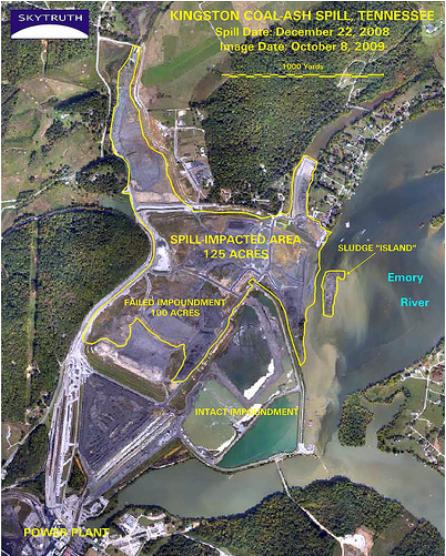RENEWABLE energy is sustainable, creates jobs and is a win-win for everyone except for coal interests. “Particulate emissions from coal plants cost Hoosiers $5 billion per year in health costs. Alternative energy create 4-5 times more jobs than fossil-fuel and nuclear investments.” (Citizens Action Coalition, 2009)
WIND, SOLAR, GEOTHERMAL and energy efficiency are technologies that will create jobs and benefit the health, environment and pocketbooks of ALL Hoosiers and TRULY re-tool America for the future!
We cannot afford more of this!
Full Story Here – INCLUDES MAP OF CONTAMINATION SITES:
http://beforeitsnews.com/news/21085/Coal_Ash_and_Other_Pollutants_Throughout_the_U.S..html
“The analysis by EIP and Earthjustice identifies 31 additional coal-ash contamination sites in 14 states, which, when added to the 70 in the EPA’s justification for the pending rule, brings the total of coal-fired power plant waste storage sites with poisoned water to 101.”
“With data showing arsenic and other toxic metal levels in contaminated water at some coal-ash disposal sites at up to 145 times federally permissible levels, the EIP/Earthjustice report identifies 31 coal-ash waste sites where groundwater, wetlands, creeks, or rivers have been polluted with “wastes (that) contain some of the earth’s most deadly pollutants, including arsenic, cadmium, lead, selenium, and other toxic metals that can cause cancer and neurological harm (in humans) or poison fish.” The 31 sites are located in the following 14 states: Delaware (1); Florida (3); Illinois (1); Indiana (2); Maryland (1); Michigan (1); Montana (1); Nevada (1); New Mexico (1); North Carolina (6); Pennsylvania (6); South Carolina (3); Tennessee (2); and West Virginia (2).”
“U.S. coal-fired power plants generate nearly 140 million tons of fly ash, scrubber sludge, and other combustion wastes every year. The EPA has indicated that coal ash dumps significantly increase risks to both people and wildlife. For example, EPA’s 2007 risk assessment estimated that up to one in 50 residents living near certain wet ash ponds could get cancer due to arsenic contamination of drinking water.”
Highlights of the EIP/Earthjustice report include:
|
|
Arsenic, a potent human carcinogen, has been found at 19 of 31 sites at extremely high levels, with one site found at nearly 150 times the federal water standard. Arsenic causes multiple forms of cancer, including cancer of the liver, kidney, lung, bladder, and skin. Offsite arsenic levels in ash-contaminated groundwater from the Reid Gardner plant (Nevada) have been measured at 31 times the EPA drinking water standard of 10 micrograms per liter. |
|
|
At least 26 of these 31 sites report contamination that exceeds one or more primary drinking water standards. |
|
|
25 out of the 31 sites are still active disposal sites. |
|
|
The damage is not limited to “wet” ash ponds that received extensive attention after the disastrous ash spill at the Tennessee Valley Authority’s Kingston plant in December 2008. No fewer than 13 of the contaminated sites documented in the EIP/Earthjustice report involved so-called “dry” disposal, including two “structural fills” that were advertised as “beneficial reuse” of coal ash. |
|
|
Examples cited in the report include: a boron- and sulfate-contaminated drinking water supply that sickened people in Montana and had to be abandoned; major arsenic pollution from a coal ash dump that contributed to a Great Lake Bay becoming an “International Area of Concern”; a mile-long plume of contamination in Florida; mercury contamination of residential wells in Tennessee; and selenium levels in West Virginia surface waters at 4-5 times what is permitted under federal law. |
|
|
The poisoned water damage could easily have been prevented with available safeguards, such as phasing out leak-prone ash ponds and requiring the use of synthetic liners and leachate collection systems. As the report notes: “Incredibly, ash and other coal combustion wastes are not subject to any federal regulations. The EPA promised to close this loophole by proposing new standards before the end of 2009. Instead, EPA’s draft rule is stalled at the Office of Management and Budget, where an avalanche of lobbyists hope it will stay buried.”
Coal Ash Spill in Tennessee -note the picture was taken almost a year from spill date |

